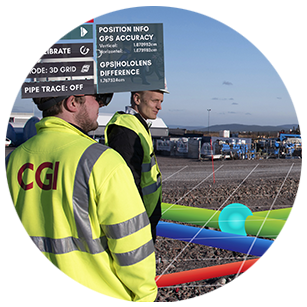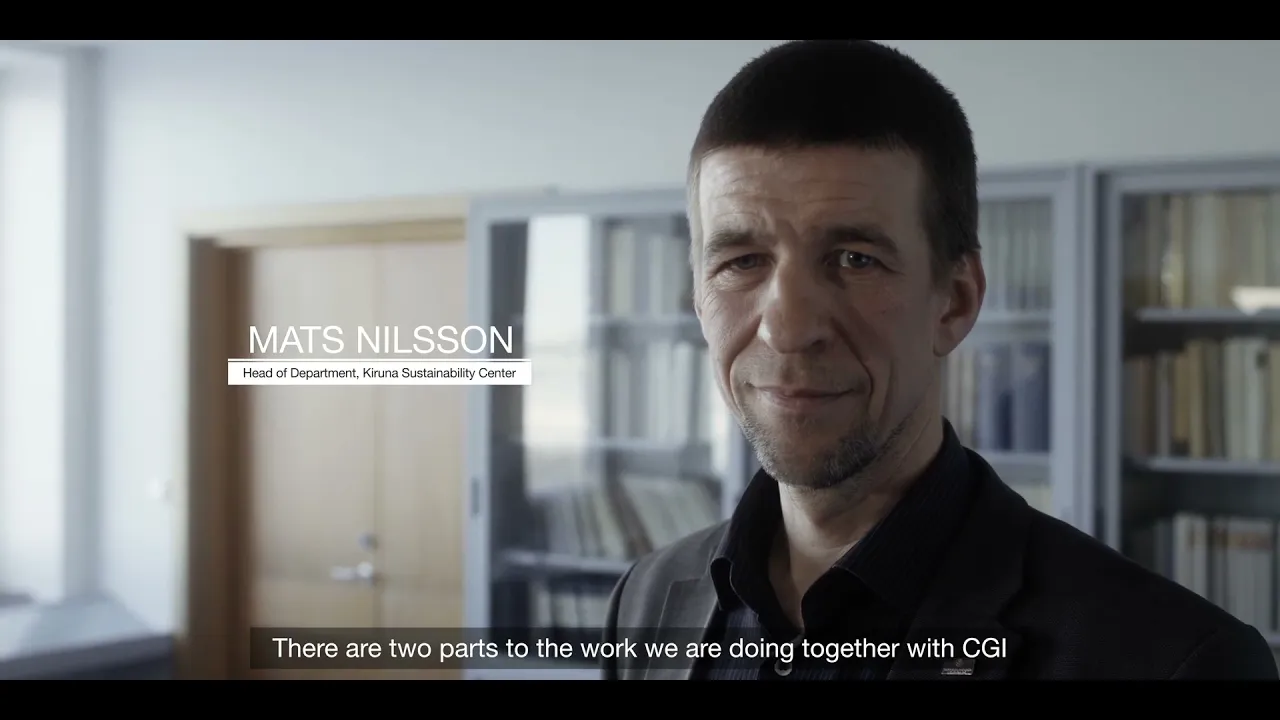Imagine the challenges associated with moving a city. This is the reality faced by Sweden’s northernmost city, the mining town of Kiruna. To continue the safe growth of mining—an industry central to the city’s economy and culture—Kiruna and its 18,000 residents are moving 3 kilometers east. While new homes and a new city center are built, some of Kiruna’s most historic buildings, such as the Kiruna Church, recognized as one of Sweden’s most popular and beautiful wooden buildings, will be physically moved to the new city center.
To enable the world’s largest municipal relocation, Kiruna needed an innovative approach, and city managers established the Kiruna Sustainability Center (KSC) to develop and test new ideas for sustainable solutions. The KSC brings together an ecosystem of municipalities, industry experts, researchers, universities and citizens in an effort to drive greater innovation and new business opportunities.
Necessity sparks innovation in the Arctic
Kiruna’s relocation requires careful architecture of the new city and a thorough understanding of the current city infrastructure. However, for Kiruna and many cities, maps and blueprints of underground infrastructure, such as public pipes and cables, can be inaccurate, outdated or unavailable. A lack of useful data can directly impact the ability to maintain and install underground infrastructure. As a result, cities may waste excavation time or incur expensive damages from broken pipes or lines, resulting in service disruptions, traffic delays and detours, and considerable costs.
A long-time resident of Kiruna and a CGI consultant, Robert Ylitalo considered the challenges associated with the move and devised a way for the city to gain a precise view of its underground infrastructure before digging. He approached the KSC with a concept for using augmented reality (AR) to digitally map, document and interact with underground infrastructure. One key challenge was that AR technology had never been used outdoors before. The city was intrigued.
To test the idea, CGI invested in a proof of concept named “Hidden City” as part of a CGI program that promotes the development of innovative ideas into real-world, practical, outcome-driven solutions. With both the city and CGI onboard, CGI technical experts began to envision a means to view and interact with the Hidden City.
Agile collaboration improves the vision
In March 2017, the CGI Hidden City team was challenged to “build a hole in the ground that does not exist.” The technology vision combined GPS-enabled data sources and GIS data from the city, visualized through augmented reality (AR). The use of AR would enable Kiruna to view concealed or hidden infrastructure, such as underground pipes. CGI was already working with AR technologies, including Microsoft’s HoloLens, a headset-based technology that enables the wearer to interact with a holographic representation of an environment.
As the CGI team worked on the vision, they met monthly with stakeholders from Kiruna to discuss progress and features. Together, they took a collaborative, co-design approach that reflected the excitement and interest of both Kiruna and CGI in the initiative. From Kiruna’s CEO, to the mayor, to city engineers, each had significant insights and recommendations for valuable features as the effort progressed.
With a vision for a minimum viable product (MVP) in mind, CGI’s experts worked diligently, testing technology’s limits. The team understood the challenges associated with extending HoloLens technology beyond its original design for indoor use.
Taking it to the street: Testing the Hidden City
In September 2017, the AR platform, which integrated city GIS data regarding newly laid pipes supported by GPS positioning data for the new city of Kiruna, was ready for testing. Kiruna’s General Manager and a GIS engineer, standing alongside the CGI team, donned HoloLens glasses. The test was a success, enabling an interactive, holographic view of the Hidden City beneath the street. As each person strolled outside City Hall, they could view the underground pipes in three dimensions. This demonstration proved not merely HoloLens’ ability to work outdoors, but also the city and CGI’s vision for visualizing its data, enabling more precise and proactive city planning and public works management
Extending capabilities for the Hidden City
The initial six-month effort was just the beginning for Kiruna and CGI. After the successful POC, the team immediately turned to additional use cases. Given Kiruna’s subarctic climate, where snow can cover the ground for nine months of the year, even manholes can be difficult to detect. How could Hidden City be extended to support city workers in the field?
Also important, how could the platform extend to smartphones and tablets? In November 2017, CGI successfully tested the Hidden City concept using smartphone technology on iOS, offering great potential for increasing the speed and accuracy of city maintenance in the future.
Together, KSC and CGI have identified a host of possibilities for collecting more extensive data about the city to support smart and sustainable growth. As Kiruna plans its operational model for managing the future smart city, benefits abound in collection, integration and display of other city infrastructure data—from pipe material types and serial numbers to sub-surface composition data like soil type or rock density.
The Hidden City concept promises significant value to municipalities planning and implementing smart city models that leverage the power of sensor data to manage assets. Kiruna and CGI continue to plan for further development of Hidden City capabilities. The roadmap includes combining IoT data within the Hidden City concept to further extend data-driven decisions for designing and managing smart cities.
The smart city of the future
The new technology developed as part of Hidden City is one component of Kiruna’s vision for the future. While planning its new city infrastructure, Kiruna is focused on smart city technologies to help better manage city infrastructure and interact with its citizens. While Kiruna may be known today as the city moving 3 km east, its vision is to be known as a wise and sustainable city empowered by innovative technology.
Given its unique subarctic climate and its investment in innovation, Kiruna seeks to become a model for the sustainable city. Based on its location, Kiruna is attractive for companies and organizations that wish to partner to test the limits of sustainability in a harsh climate. Kiruna’s Sustainability Manager is focused on establishing the infrastructure for testing other sustainable innovations using emerging technologies such as AR, AI and IoT.
“When we use Kiruna’s urban transformation as a test bed for innovative and sustainable solutions, we not only create a new sustainability industry in Kiruna. Kirunaborna (residents) also get a smart and sustainable city to live and live in,” says Mats Nilsson, Chief Executive Officer, Sustainability and Business Development, Technical Works, Kiruna Municipality.
Kiruna hopes that the success of Hidden City—and the significant interest it has garnered at international smart city conferences—will position Kiruna as an optimal location for innovation and the creation of new businesses and opportunities.
As Kristina Zakrisson, Kiruna Municipal City Council Chair, states, “It is important to capture the experiences and innovations that arise from Kiruna’s urban transformation and transform them into business. The interest from the business sector is positive as it promotes economic growth and employment. The fact that CGI takes the step of using urban change as a basis for innovation is positive for Kiruna Municipality.”
The knowledge gained from this investment in sustainable innovation will be immeasurable to urban planners and other cities that, due to environmental impacts such as rising sea levels, may need to re-envision their cities as well.






